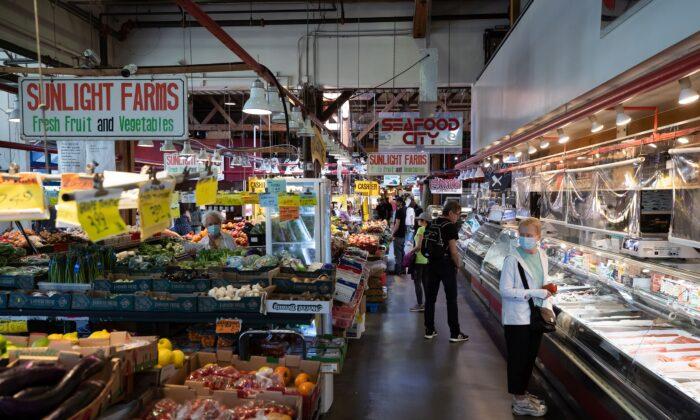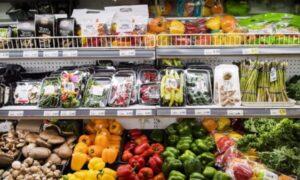The price of groceries has yet to stabilize despite assurances from Industry Minister François-Philippe Champagne that costs would go down shortly after Thanksgiving.
Mr. Champagne, who met with executives from Loblaws, Metro, Empire, Walmart, and Costco last September, promised a “plan by Thanksgiving” with grocery prices to “stabilize” shortly thereafter.
Of the 47 tracked items that decreased in cost, many had modest price drops like a one-cent savings on bananas which went from $1.68 to $1.67 per kilogram on average, according to Blacklock’s Reporter. Other minuscule savings included a one-cent drop on ground coffee, a two-cent decrease on toothpaste, and a three-cent reduction on frozen broccoli.
Produce was the worst offender for price increases, according to the StatCan report. The cost of apples rose 11 percent from $4.50 per kilogram to $5 while grapes increased 13 percent from $7.57 per kilogram to $8.52.
Citrus fruits, cantaloupes, strawberries, and a wide range of fresh and frozen vegetables also went up in price as did staples such as milk, butter, eggs, cheese, and bread. Infant formula and some cuts of meat also rose in price as did so-called bargain foods like pasta, cereal, and peanut butter.
Prime Minister Justin Trudeau said last September that Ottawa expected major Canadian grocers to come up with a plan by Thanksgiving to stabilize prices.
Mr. Trudeau warned that if the plan did not go far enough the federal government would take further action, which could include tax measures. So far, the government has not implemented any measures to encourage cooperation.
Finance Minister Chrystia Freeland in November said more competition is needed in Canada’s grocery sector to help stabilize prices. Her comments came after two of the country’s major grocers reported higher profits and sales in the most recent quarter.
Bank of Canada Governor Tiff Macklem has acknowledged that interest rate hikes have been difficult on Canadians, particularly with the rising cost of food and shelter.
Shopping Habits
Canada’s 2024 Food Price Report, released in December by Agri-Food Analytics Lab at Dalhousie University, predicts that the price of groceries will increase by an average of $701.79 per family of four in the new year.The report found that 80.3 percent of Canadians expect food prices to rise in 2024—and they plan to change their food shopping habits in response by using more coupons and loyalty programs as well as shopping at different stores to get better deals.
What Canadians buy will also be impacted by the rising cost of food, with many saying they will cut back on particular products, the survey found. Snacks and convenience foods were the No. 1 choice for cutbacks in 2024, with 43.2 percent saying they would buy less of both.
Meat and alcohol were also on the chopping block, according to the report, with 30.5 percent and 28.2 percent respectively saying they would limit the amount they purchase. Fish and seafood were next on the list at 16.3 percent, followed by fresh produce and dairy products, which both came in at 12.9 percent.







